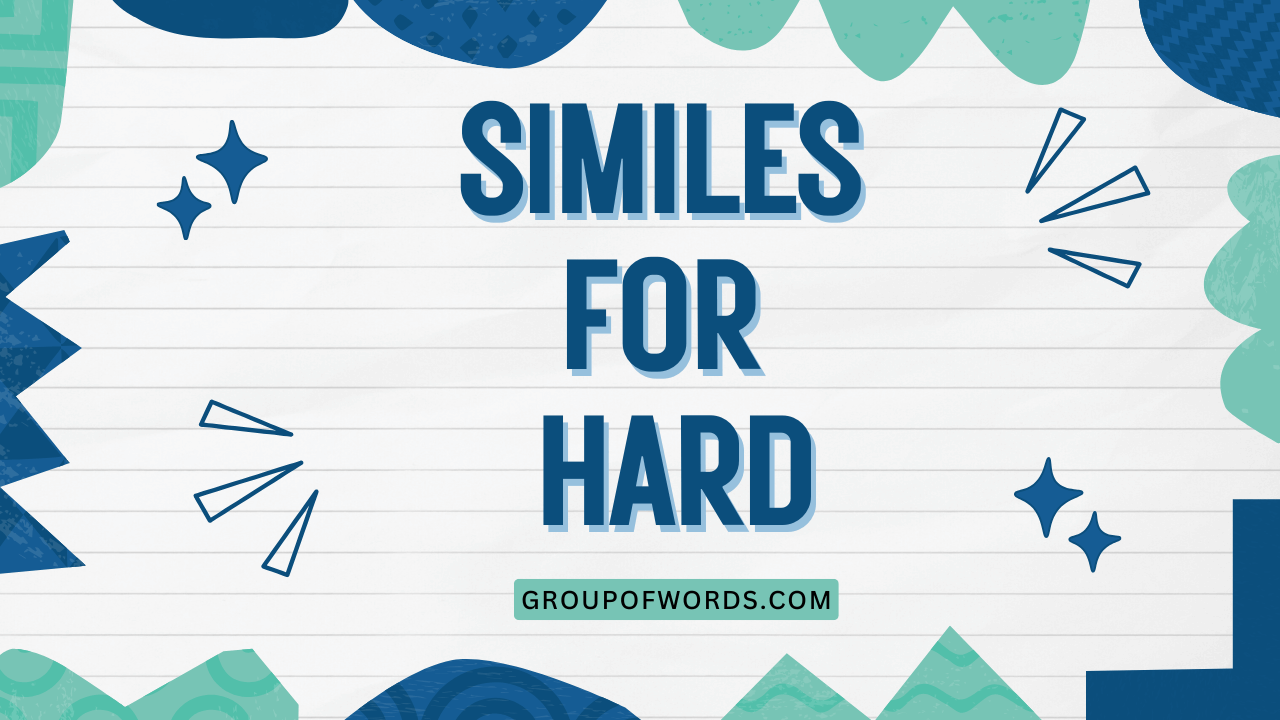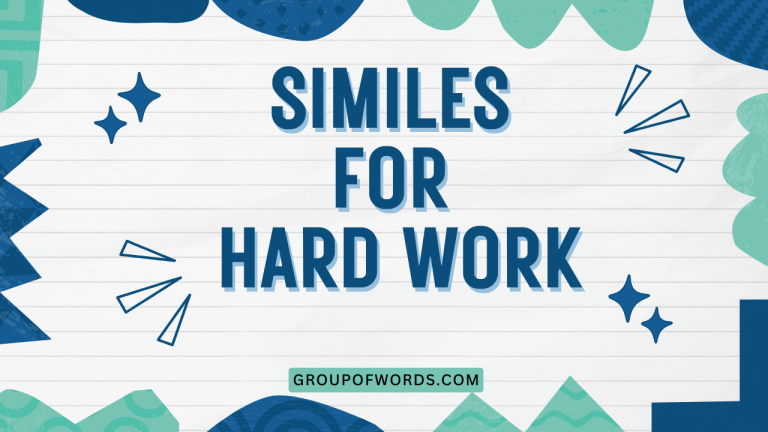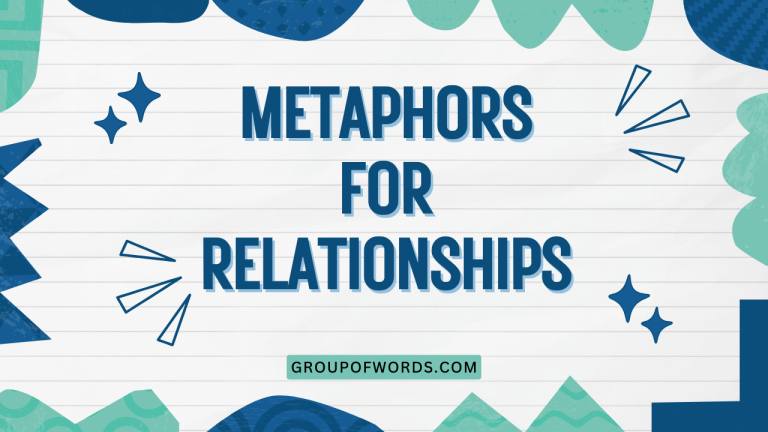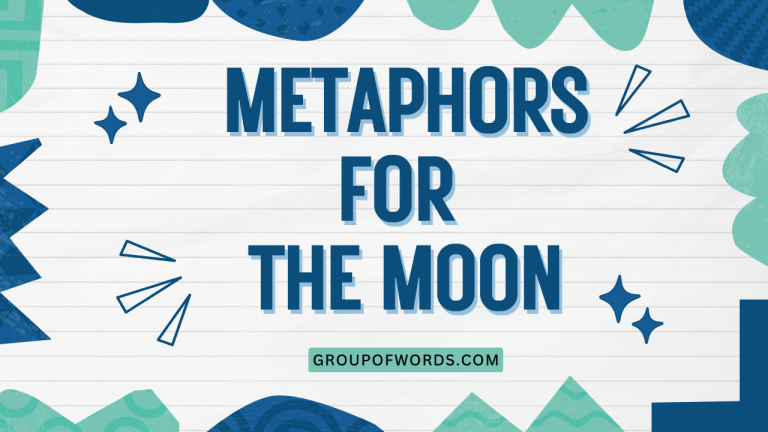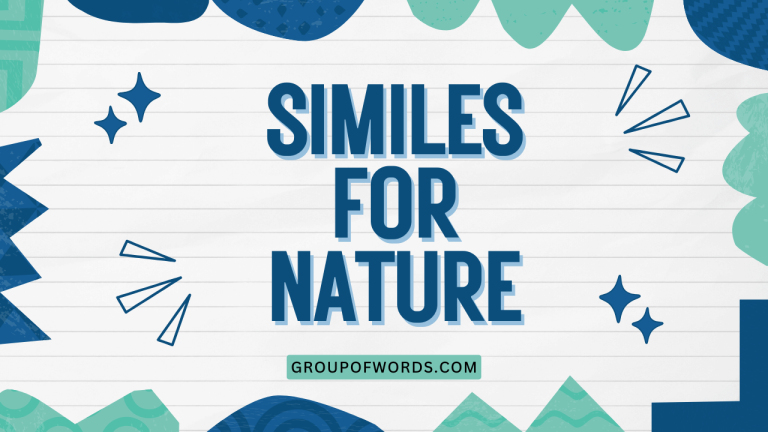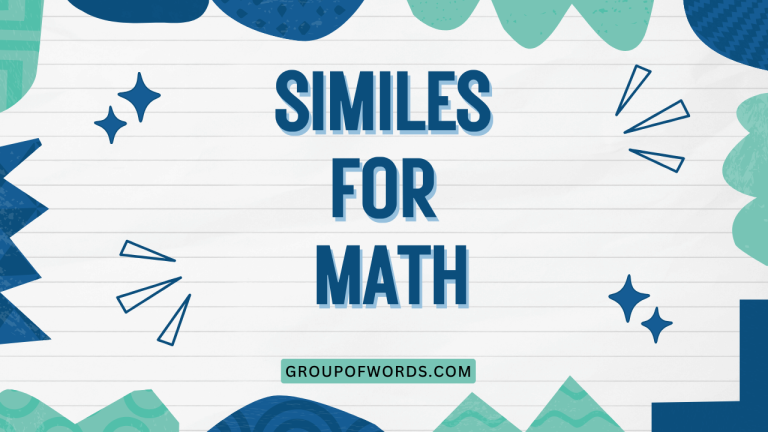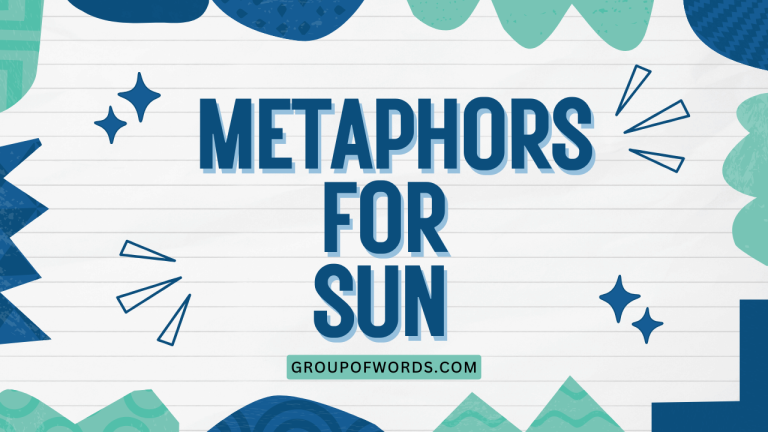Similes for Hard: Mastering Figurative Language
Understanding similes is crucial for enhancing your writing and comprehension skills. Similes allow you to create vivid comparisons, making your language more engaging and impactful.
This article focuses specifically on similes used to describe the quality of being “hard,” exploring various expressions that convey different aspects of hardness. Whether you’re a student aiming to improve your essay writing, a professional looking to add flair to your communications, or simply an English language enthusiast, this guide will provide you with a comprehensive understanding of similes for “hard.” By the end of this article, you’ll be able to recognize, interpret, and effectively use these similes in your own writing and speech.
This guide breaks down the concept of similes for “hard,” providing clear definitions, structural examples, and practical applications. We’ll explore different categories of hardness that similes can represent, from physical rigidity to emotional resilience.
Through numerous examples, practice exercises, and explanations of common mistakes, you’ll gain a solid grasp of this important aspect of figurative language. Let’s dive in and discover the power of similes to describe hardness in all its forms.
Table of Contents
- Definition of Similes for “Hard”
- Structural Breakdown of Similes
- Types of Hardness and Corresponding Similes
- Examples of Similes for “Hard”
- Usage Rules for Similes
- Common Mistakes with Similes
- Practice Exercises
- Advanced Topics in Similes
- Frequently Asked Questions (FAQ)
- Conclusion
Definition of Similes for “Hard”
A simile is a figure of speech that compares two unlike things using the words “like” or “as.” Similes are used to draw a parallel between the characteristics of these two things, enhancing the description and making it more vivid and relatable. When we talk about similes for “hard,” we’re referring to comparisons that highlight the quality of being firm, unyielding, difficult, or emotionally resistant.
Essentially, they help us understand and visualize the concept of “hardness” by relating it to something else that shares a similar quality.
The function of a simile is to create a stronger and more imaginative connection in the reader’s or listener’s mind. Instead of simply stating that something is hard, a simile provides a point of reference that allows for a deeper understanding and appreciation of the quality being described.
This makes the language more impactful and memorable. For example, saying “His heart was as hard as stone” is more evocative than simply saying “He was heartless.”
Similes for “hard” can be used in various contexts, from describing the physical properties of an object to portraying the emotional state of a character. They are commonly found in literature, poetry, and everyday conversation.
Understanding how to use these similes effectively can significantly improve your ability to communicate and express yourself with greater clarity and creativity. The key is to choose comparisons that are both relevant and evocative, creating a strong connection between the two things being compared.
Structural Breakdown of Similes
The basic structure of a simile consists of three main components: the subject being described, the connecting word (“like” or “as”), and the object or concept to which the subject is being compared. Understanding this structure is essential for creating and interpreting similes effectively.
Here’s a breakdown:
- Subject: This is the thing or person being described. It’s the entity whose hardness we are trying to convey. For example, “the rock” or “his resolve.”
- Connecting Word: This is the word that establishes the comparison. The two most common connecting words are “like” and “as.” For example, “like” in “The rock was like a diamond” or “as” in “His resolve was as firm as steel.”
- Object of Comparison: This is the thing or concept that shares the quality of hardness with the subject. It provides a point of reference that helps the reader or listener understand the nature of the subject’s hardness. For example, “a diamond” or “steel.”
The formula can be summarized as: Subject + Connecting Word + Object of Comparison. For example:
- The ground was as hard as concrete.
- Her stare was like ice.
- His determination felt like a wall of iron.
It’s important to note that the object of comparison should be something that is generally understood to be hard. This shared understanding is what makes the simile effective.
If the object of comparison is not commonly associated with hardness, the simile will likely be confusing or ineffective. For instance, comparing something to cotton to express hardness wouldn’t make sense because cotton is generally perceived as soft, not hard.
Types of Hardness and Corresponding Similes
The concept of “hardness” is multifaceted and can refer to different qualities. Understanding these different types of hardness can help you choose the most appropriate and effective similes.
Here are three major categories:
Physical Hardness
This refers to the tangible rigidity and resistance to pressure of a physical object. Similes in this category often involve comparisons to materials known for their strength and solidity, such as rocks, metals, and other durable substances.
For example, “as hard as granite” or “like a steel beam.”
Emotional Hardness
This refers to a lack of empathy, compassion, or vulnerability. Similes in this category often involve comparisons to things that are cold, unyielding, or impenetrable, such as ice, stone, or a fortress.
For example, “as cold as ice” or “like a heart of stone.” Emotional hardness can also refer to resilience, or the ability to withstand emotional stress. For example, “as tough as nails” or “like a rock in a storm.”
Difficulty Hardness
This refers to the level of challenge or effort required to accomplish something. Similes in this category often involve comparisons to tasks or obstacles that are known to be difficult or demanding, such as climbing a mountain, solving a complex puzzle, or navigating a treacherous path.
For example, “as hard as climbing Mount Everest” or “like solving a Rubik’s Cube blindfolded.”
Examples of Similes for “Hard”
To illustrate the different types of hardness and how they are expressed through similes, here are several examples organized by category.
Physical Hardness Examples
These similes are used to describe the physical properties of objects, emphasizing their rigidity, strength, and resistance to deformation.
The following table provides a range of similes for describing physical hardness, each offering a unique perspective on the subject. The table includes examples that compare the subject to various materials and objects known for their durability and strength, providing a comprehensive overview of how to effectively convey physical hardness through figurative language.
| Simile | Explanation | Example Sentence |
|---|---|---|
| As hard as a rock | Emphasizes extreme solidity and unyielding nature. | The dried mud was as hard as a rock, making it difficult to dig. |
| Like a steel beam | Highlights the strength and rigidity of metal. | The support structure was like a steel beam, ensuring the building’s stability. |
| As tough as nails | Suggests resilience and resistance to damage. | The old wooden chest was as tough as nails, having survived many years of use. |
| Like concrete | Implies a solid, unyielding surface. | The newly poured sidewalk was like concrete, smooth and impenetrable. |
| As firm as granite | Highlights the dense and durable nature of granite. | The countertop was as firm as granite, providing a stable surface for cooking. |
| Like a diamond | Emphasizes extreme hardness and resistance to scratching. | The drill bit was like a diamond, capable of cutting through any material. |
| As solid as a brick wall | Suggests an impenetrable and unyielding barrier. | The defensive line was as solid as a brick wall, stopping the opposing team’s advance. |
| Like iron | Highlights the strength and durability of the metal. | The old gate was like iron, strong and resistant to rust. |
| As sturdy as an oak tree | Implies strength and resilience over time. | The ancient table was as sturdy as an oak tree, showing no signs of wear. |
| Like a fortress wall | Suggests an impenetrable and defensive structure. | The city’s defenses were like a fortress wall, protecting it from invaders. |
| As dense as lead | Emphasizes the heavy and compact nature of lead. | The shield was as dense as lead, providing excellent protection against radiation. |
| Like a block of ice | Suggests a frozen and unyielding state. | The frozen lake was like a block of ice, smooth and dangerous to walk on. |
| As unyielding as titanium | Highlights the strength and resistance of titanium. | The prosthetic limb was as unyielding as titanium, allowing for full mobility. |
| Like hardened clay | Emphasizes the transformation from soft to rigid. | The pottery was like hardened clay, strong after being fired in the kiln. |
| As compact as a tightly packed snowball | Suggests density and resistance to breaking apart. | The snowball was as compact as a tightly packed snowball, feeling solid in my hand. |
| Like petrified wood | Implies the transformation of organic material into stone. | The fossil was like petrified wood, a testament to the passage of time. |
| As unbreakable as tempered glass | Highlights the enhanced strength and resistance to shattering. | The screen protector was as unbreakable as tempered glass, protecting the phone from damage. |
| Like a reinforced vault | Suggests an extremely secure and impenetrable structure. | The bank’s vault was like a reinforced vault, designed to withstand any attempt to breach it. |
| As rigid as a frozen lake | Emphasizes the solid and unmoving nature of frozen water. | The surface of the lake was as rigid as a frozen lake, perfect for ice skating. |
| Like an anvil | Highlights the strength and durability used for hammering. | The blacksmith’s anvil was like an anvil, able to withstand repeated blows. |
| As hard as flint | Suggests the ability to create sparks and withstand impact. | The striker was as hard as flint, able to ignite the tinder with ease. |
| Like a solid core | Emphasizes the dense and impenetrable center. | The golf ball was like a solid core, designed for maximum distance. |
| As tough as rawhide | Highlights the durability and resistance to tearing. | The dog toy was as tough as rawhide, able to withstand hours of chewing. |
Emotional Hardness Examples
These similes are used to describe a person’s emotional state, emphasizing their lack of empathy, resilience, or emotional vulnerability.
The following table offers a variety of similes that describe emotional hardness, each providing a different nuance to the subject’s emotional state. These similes range from portraying a lack of empathy and compassion to highlighting resilience and an ability to withstand emotional stress, thus giving a comprehensive understanding of how to use figurative language to express emotional hardness.
| Simile | Explanation | Example Sentence |
|---|---|---|
| As cold as ice | Emphasizes a lack of warmth or emotion. | Her stare was as cold as ice, sending a shiver down my spine. |
| Like a heart of stone | Suggests a complete lack of empathy or compassion. | His heart was like a heart of stone, unmoved by the suffering around him. |
| As tough as nails | Highlights resilience and the ability to withstand emotional pain. | She was as tough as nails, having overcome many hardships in her life. |
| Like a rock in a storm | Suggests stability and unwavering strength in the face of adversity. | He was like a rock in a storm, providing support and comfort to his family during the crisis. |
| As impenetrable as a fortress | Emphasizes an emotional barrier that is difficult to break through. | Her emotional defenses were as impenetrable as a fortress, making it hard to get close to her. |
| Like a wall of iron | Suggests a strong and unyielding emotional barrier. | He put up a wall of iron around his emotions, refusing to let anyone see his vulnerability. |
| As unfeeling as a machine | Implies a lack of human emotion or empathy. | His responses were as unfeeling as a machine, lacking any warmth or compassion. |
| Like a closed book | Suggests a person who is emotionally guarded and difficult to read. | She was like a closed book, revealing very little about her inner thoughts and feelings. |
| As stoic as a statue | Highlights an ability to endure pain or hardship without showing emotion. | He remained as stoic as a statue, showing no signs of grief even at the funeral. |
| Like a shield against emotions | Suggests a protective barrier against emotional vulnerability. | She used sarcasm like a shield against emotions, deflecting any attempts to get close to her. |
| As hardened as steel | Emphasizes the strengthening effect of enduring difficult experiences. | His experiences in the war had made him as hardened as steel, changing him forever. |
| Like an unyielding mountain | Suggests unwavering resolve and resistance to emotional pressure. | Her determination was like an unyielding mountain, unshaken by doubts or fears. |
| As firm as a clenched fist | Highlights a resolute and unyielding emotional stance. | His resolve was as firm as a clenched fist, determined to see his plan through. |
| Like a frozen tundra | Emphasizes the barren and emotionless landscape of the heart. | His emotional state was like a frozen tundra, devoid of warmth or life. |
| As unbreakable as a diamond | Suggests extreme emotional resilience and an inability to be broken by hardship. | Her spirit was as unbreakable as a diamond, shining even in the darkest of times. |
| Like a vault | Implies containment and suppression of emotions. | His emotions were locked away like a vault, hidden from the world. |
| As unbending as iron | Highlights a rigid and inflexible emotional stance. | His principles were as unbending as iron, refusing to compromise his beliefs. |
| Like a stone wall | Suggests an impenetrable barrier to emotional connection. | He built a stone wall around his heart, preventing anyone from getting too close. |
| As immovable as a boulder | Emphasizes a stubborn and unyielding emotional position. | Her opinion was as immovable as a boulder, impossible to change. |
| Like a heart encased in ice | Implies a cold and unfeeling emotional state. | Her heart seemed like a heart encased in ice, untouched by love or compassion. |
| As resolute as a general | Highlights a firm and unwavering emotional determination. | She was as resolute as a general, leading her team through the difficult project. |
| Like a fortress against sorrow | Suggests a strong defense against emotional pain. | He built himself like a fortress against sorrow, protecting himself from future heartbreak. |
| As unyielding as a mountain peak | Emphasizes a steadfast and unwavering emotional presence. | She stood as unyielding as a mountain peak, facing the challenges with unwavering courage. |
Difficulty Hardness Examples
These similes are used to describe the level of challenge or effort required to accomplish something, emphasizing its difficulty.
The subsequent table provides a diverse set of similes illustrating difficulty hardness, each offering a unique perspective on the level of challenge involved. From comparing tasks to climbing formidable mountains to solving intricate puzzles, these similes effectively convey the effort and complexity required to overcome various obstacles, thereby enriching one’s understanding of how to articulate difficulty through figurative language.
| Simile | Explanation | Example Sentence |
|---|---|---|
| As hard as climbing Mount Everest | Emphasizes the extreme physical and mental challenge. | Getting the project approved felt as hard as climbing Mount Everest. |
| Like solving a Rubik’s Cube blindfolded | Highlights the complexity and mental dexterity required. | Understanding the new software was like solving a Rubik’s Cube blindfolded. |
| As tough as pulling teeth | Suggests a frustrating and difficult process. | Negotiating the contract was as tough as pulling teeth. |
| Like navigating a minefield | Emphasizes the danger and potential pitfalls involved. | Trying to please everyone at the meeting was like navigating a minefield. |
| As challenging as running a marathon | Highlights the endurance and stamina required. | Balancing work and family life is as challenging as running a marathon. |
| Like deciphering ancient hieroglyphs | Suggests a complex and obscure task. | Understanding the legal document was like deciphering ancient hieroglyphs. |
| As difficult as finding a needle in a haystack | Emphasizes the near impossibility of the task. | Finding the missing file was as difficult as finding a needle in a haystack. |
| Like walking through quicksand | Suggests a slow and arduous process. | Making progress on the project felt like walking through quicksand. |
| As demanding as training for the Olympics | Highlights the intense dedication and effort required. | Preparing for the exam was as demanding as training for the Olympics. |
| Like building a house with your bare hands | Emphasizes the labor-intensive and time-consuming nature of the task. | Starting the business from scratch was like building a house with your bare hands. |
| As arduous as crossing the Sahara Desert | Suggests a long and exhausting journey. | Completing the research paper felt as arduous as crossing the Sahara Desert. |
| Like untangling a ball of yarn | Emphasizes the complexity and frustration involved. | Sorting out the financial records was like untangling a ball of yarn. |
| As painstaking as restoring an old masterpiece | Highlights the attention to detail and precision required. | Repairing the antique clock was as painstaking as restoring an old masterpiece. |
| Like swimming against the current | Suggests constant resistance and struggle. | Trying to change the company culture felt like swimming against the current. |
| As intricate as solving a complex equation | Emphasizes the intellectual challenge. | Understanding the scientific theory was as intricate as solving a complex equation. |
| Like climbing a greased pole | Suggests a slippery and difficult ascent. | Trying to get a promotion at the company felt like climbing a greased pole. |
| As formidable as facing a firing squad | Highlights the intimidating and stressful nature of the task. | Presenting the proposal to the board felt as formidable as facing a firing squad. |
| Like herding cats | Emphasizes the difficulty of controlling a group of people. | Managing the team during the crisis felt like herding cats. |
| As taxing as performing brain surgery | Highlights the mental strain and precision required. | Writing the legal brief was as taxing as performing brain surgery. |
| Like threading a needle in the dark | Suggests a task requiring extreme precision and patience. | Trying to debug the code felt like threading a needle in the dark. |
| As laborious as digging a tunnel by hand | Emphasizes the physical effort and time involved. | Gathering all the data for the report was as laborious as digging a tunnel by hand. |
| Like piecing together a shattered vase | Suggests a delicate and intricate task. | Rebuilding the relationship after the argument felt like piecing together a shattered vase. |
| As challenging as building a sandcastle during high tide. | Highlights the futility and difficulty of working against opposing forces. | Convincing the stubborn client was as challenging as building a sandcastle during high tide. |
Usage Rules for Similes
Using similes effectively requires understanding a few key rules. These rules ensure that your similes are clear, impactful, and appropriate for the context.
- Ensure Relevance: The object of comparison should be relevant to the subject being described. The connection between the two should be clear and logical. For example, comparing a rock to a steel beam to emphasize hardness is relevant because both are known for their strength and rigidity.
- Maintain Clarity: The simile should enhance understanding, not confuse the reader. Avoid obscure or overly complex comparisons. The object of comparison should be something that is generally understood.
- Avoid Clichés: While some common similes are effective, overuse can make your writing seem unoriginal. Try to come up with fresh and creative comparisons. Instead of “as hard as a rock,” consider “as unyielding as a glacier.”
- Consider Context: The appropriateness of a simile depends on the context in which it is used. A simile that works well in a formal essay might not be suitable for a casual conversation.
- Use Sparingly: While similes can enhance your writing, overuse can make it seem forced or unnatural. Use them strategically to highlight key points and add impact.
- Be Specific: The more specific your simile, the more vivid and engaging it will be. Instead of saying “as hard as metal,” specify the type of metal, such as “as hard as titanium.”
Adhering to these rules will help you create similes that are both effective and appropriate, enhancing your writing and communication skills.
Common Mistakes with Similes
Even experienced writers sometimes make mistakes when using similes. Being aware of these common errors can help you avoid them and improve your writing.
- Using Inappropriate Comparisons: Comparing something to an object that doesn’t logically relate to the quality being described.
- Incorrect: The pillow was as hard as a cloud.
- Correct: The pillow was as hard as a rock.
- Overusing Clichés: Relying on tired and unoriginal similes.
- Cliché: As hard as nails.
- Improved: As resilient as tempered steel.
- Creating Confusing Comparisons: Using comparisons that are difficult to understand or interpret.
- Incorrect: His argument was as hard as a quantum entanglement.
- Correct: His argument was as impenetrable as a fortress.
- Using Too Many Similes: Overloading your writing with too many comparisons, making it seem forced and unnatural.
- Overuse: The task was as hard as climbing Everest, like solving a Rubik’s Cube blindfolded, and as tough as pulling teeth.
- Improved: The task was as challenging as climbing Everest.
- Misusing “Like” and “As”: Using these words incorrectly in the simile structure.
- Incorrect: He was hard as like a rock.(Double Use)
- Correct: He was as hard as a rock.
By being mindful of these common mistakes, you can use similes more effectively and avoid weakening your writing.
Practice Exercises
To test your understanding of similes for “hard,” complete the following exercises. Identify the type of hardness being described in each sentence and try to create your own similes for each scenario.
The following exercises are designed to reinforce your understanding of similes for “hard.” Each exercise consists of ten questions that require you to identify the type of hardness being described and to create your own similes for the given scenarios. The answers are provided below to help you assess your progress and understanding of the material.
| Exercise 1: Identify the Type of Hardness | Answer |
|---|---|
| 1. Her determination was like a steel rod. (Physical, Emotional, or Difficulty?) | Emotional |
| 2. The ground was as hard as concrete after the storm. (Physical, Emotional, or Difficulty?) | Physical |
| 3. Getting the project approved felt like pulling teeth. (Physical, Emotional, or Difficulty?) | Difficulty |
| 4. His heart was as cold as ice after the betrayal. (Physical, Emotional, or Difficulty?) | Emotional |
| 5. The puzzle was as hard as deciphering ancient hieroglyphs. (Physical, Emotional, or Difficulty?) | Difficulty |
| 6. The shield was as dense as lead. (Physical, Emotional, or Difficulty?) | Physical |
| 7. She was as tough as nails, having overcome many challenges. (Physical, Emotional, or Difficulty?) | Emotional |
| 8. Finding the error in the code was like finding a needle in a haystack. (Physical, Emotional, or Difficulty?) | Difficulty |
| 9. The diamond was as hard as a rock. (Physical, Emotional, or Difficulty?) | Physical |
| 10. His resolve was like an unyielding mountain. (Physical, Emotional, or Difficulty?) | Emotional |
| Exercise 2: Create Your Own Similes | Possible Answer |
|---|---|
| 1. Describe a difficult task: The task was as hard as… | The task was as hard as navigating a maze blindfolded. |
| 2. Describe someone with a lack of empathy: His heart was like… | His heart was like a frozen tundra. |
| 3. Describe a physically strong object: The metal was as hard as… | The metal was as hard as titanium. |
| 4. Describe a challenging situation: The situation was like… | The situation was like walking through quicksand. |
| 5. Describe someone who is emotionally resilient: She was as tough as… | She was as tough as a seasoned warrior. |
| 6. Describe something impenetrable: The door was as hard as… | The door was as hard as a reinforced vault. |
| 7. Describe a complex problem: The problem was like… | The problem was like untangling a ball of yarn. |
| 8. Describe someone unyielding: His stance was as firm as… | His stance was as firm as a clenched fist. |
| 9. Describe a dense material: The substance was as compact as… | The substance was as compact as a tightly packed snowball. |
| 10. Describe an arduous journey: The journey was as demanding as… | The journey was as demanding as training for the Olympics. |
Advanced Topics in Similes
For advanced learners, exploring more complex aspects of similes can further enhance your understanding and usage. This includes understanding extended similes, using similes in different literary genres, and analyzing the cultural context of similes.
- Extended Similes: These are similes that are developed over several lines or even an entire paragraph, creating a more detailed and elaborate comparison. They are often used in poetry and prose to create vivid imagery and deepen the reader’s understanding.
- Similes in Different Genres: The use of similes can vary depending on the genre. In poetry, similes are often used to create emotional impact and sensory imagery. In scientific writing, similes can be used to explain complex concepts in a more accessible way.
- Cultural Context of Similes: The effectiveness of a simile can depend on the cultural context in which it is used. Some comparisons may be more relevant or understandable to certain audiences than others. Understanding these nuances can help you use similes more effectively in cross-cultural communication.
By delving into these advanced topics, you can gain a deeper appreciation for the power and versatility of similes in language and literature.
Frequently Asked Questions (FAQ)
Here are some frequently asked questions about similes for “hard” to help clarify any remaining points.
- What is the difference between a simile and a metaphor?
A simile compares two things using “like” or “as,” while a metaphor directly equates two things without using these words. For example, “He is like a rock” (simile) versus “He is a rock” (metaphor).
- How can I avoid using clichés in my similes?
Try to think of unique and original comparisons that are not commonly used. Brainstorm different objects or concepts that share the quality you want to describe and choose the one that is most unexpected and evocative.
- Can a simile be too complex?
Yes, if the comparison is too obscure or difficult to understand, it can confuse the reader and weaken the impact of your writing. The best similes are clear, concise, and relevant.
- Is it okay to use similes in formal writing?
Yes, but use them sparingly and choose comparisons that are appropriate for the tone and audience of your writing. Avoid overly informal or colloquial similes in formal contexts.
- How do I choose the right object of comparison for a simile?
Consider the specific quality you want to emphasize and choose an object or concept that is strongly associated with that quality. Make sure the comparison is relevant, clear, and evocative.
- What is an extended simile, and how is it used?
An extended simile is a simile that is developed over several lines or paragraphs, providing a more detailed and elaborate comparison. It is used to create vivid imagery and deepen the reader’s understanding.
- How does cultural context affect the use of similes?
The effectiveness of a simile can depend on the cultural context in which it is used. Some comparisons may be more relevant or understandable to certain audiences than others. Understanding these nuances can help you use similes more effectively in cross-cultural communication.
- Can I use a simile to describe an abstract concept?
Yes, similes can be a powerful tool for making abstract concepts more concrete and understandable. By comparing an abstract concept to something tangible and familiar, you can help your audience grasp its meaning more easily.
Conclusion
Mastering similes for “hard” can significantly enhance your writing and communication skills. By understanding the different types of hardness, the structure of similes, and the rules for using them effectively, you can create vivid and impactful comparisons that engage your audience.
Remember to avoid clichés, maintain clarity, and consider the context in which you are writing. The best similes are those that are both relevant and original, adding depth and richness to your language.
Continue practicing and experimenting with different similes to develop your own unique style. Pay attention to how other writers use similes and analyze their effectiveness.
By incorporating these techniques into your writing
and speech, you’ll become more adept at using figurative language to express yourself clearly and creatively. Embrace the challenge, and you’ll find your ability to communicate and connect with others will significantly improve.
